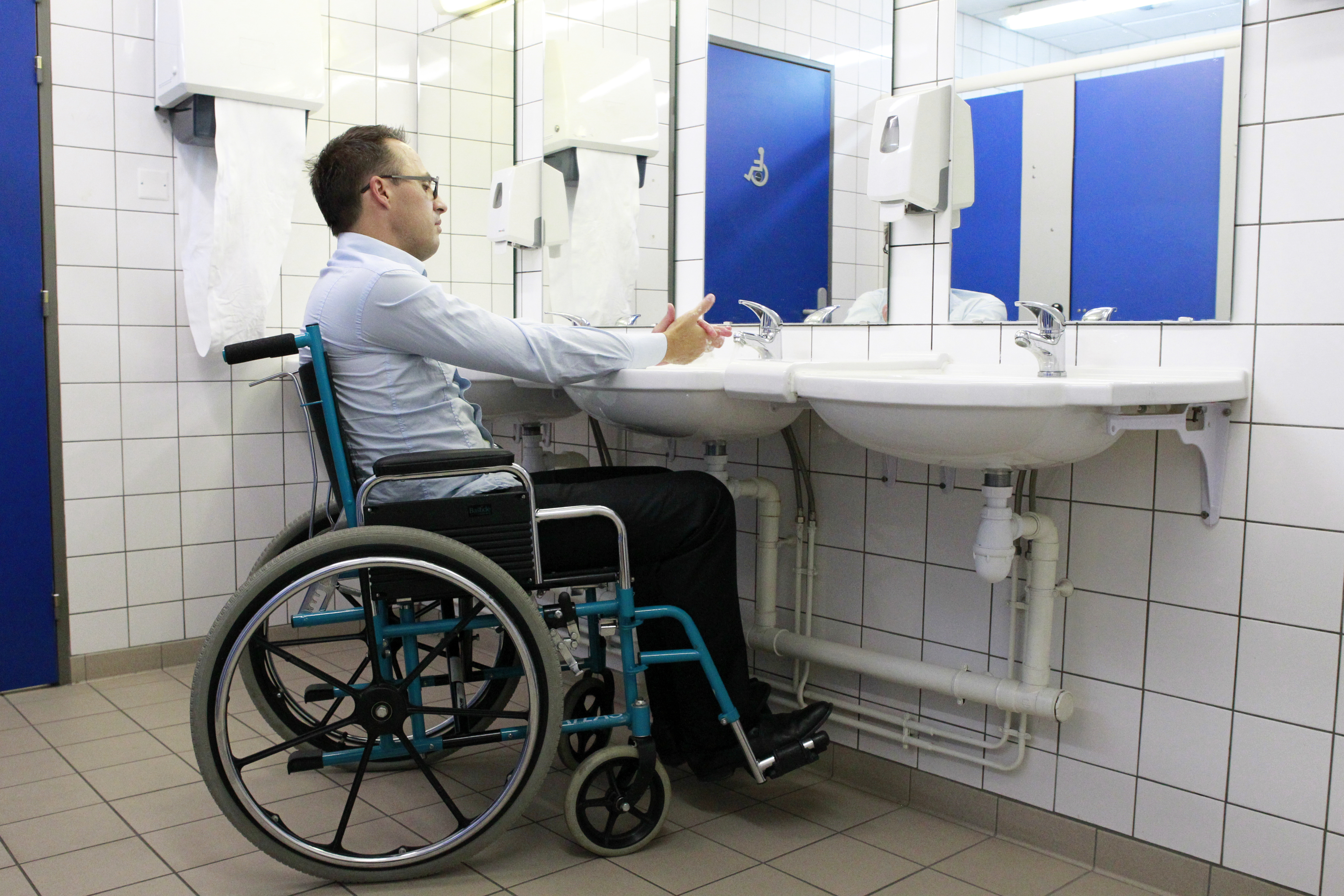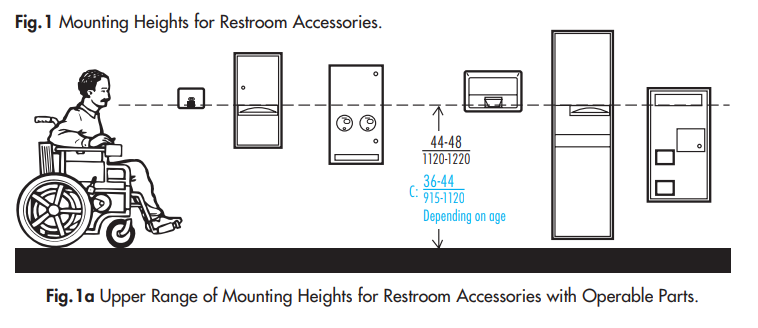A Brief Guide to Restroom Compliances

Think of The White House, The Eiffel Tower, and The Museum of Modern Art. What do all of these buildings have in common?
They all have restrooms.
Restrooms are a staple of any building and, in most cases, a requirement. With this, comes regulations and building codes from the Government to make sure all citizens can access your restroom safely. These guidelines fall under the Americans with Disabilities Act (ADA). ADA is a federal civil rights law that prohibits discrimination against people with disabilities. Having a restroom that is inaccessible to a person with a disability is an act of discrimination and can result in a heavy fine against your company. This can be costly as ADA restroom violations range from $55,000 for the first offense to up to $110,000 for repeated strikes. Plus, ADA laws have no grace periods, which means if you receive a complaint you can be faced with an immediate lawsuit.
None of this sounds fun. Which is why you should knowledge yourself with the information and solutions BEFORE a potential court fine.
We recommend reading the entire ADA Guideline to best understand the Restroom Compliances needed. But in this article, we will provide a brief overview to get you started on a better understanding of Restroom Compliances.
Doors
• Make sure to accommodate the door swing for a person in a wheelchair. If the door swings into the bathroom, instead of outward, it can be difficult to maneuver. There should be enough floor space for a person to navigate the bathroom without trouble.
Grab Bars
- • Grab Bars must have a minimum of an inch and a half of clear space in each direction. Be careful not to install the toilet paper dispenser too closely to the Grab Bar, as well, as it can affect the accessibility.
- • Should be at least 36 inches long on the rear wall or 42 inches on the sidewall and should be mounted 33-36 inches above the floor. They need a gripping surface of at least 1.25 inched and can withstand at least 250 pounds of pressure.
Signage
- • Signs must be mounted on the latch side of the door
- • Must be 48 inches minimum and 60 inches maximum, measured from the finished floor to the bottom line of text
- • ADA requires that the sign has both Braille and tactile text
- • California’s Title 24 also states that a specific symbol is to be used for doorways leading to a public restroom.
Toilets
- • Toilet seats must be at the height of 17-19 inches high
- • Urinals should be stall-type or wall hung at a maximum of 17 inches from the floor
- • Be careful the flush valve is on the right side, so someone does not have to reach across the toilet to flush it.
Paper Towel Dispenser/Hand Dryer
- • For hand dryers, all buttons and/or touch-free sensors must be between a height of 38 inches to 48 inches above the ground. Any push buttons must be operable with one hand and should start the hand dryer with a force of no more than five pounds.
- • ADA states that paper towels must be accessible from 15 inches to 48 inches off the floor. They must also allow both forward and side reach for people in wheelchairs, in order to be ADA compliant.
Sinks
- • Faucets should be lever-operated, push, touch, or electronically controlled. Users should be able to work it with one hand, without the need to apply pressure on the wrist.
- • Sinks should not be mounted higher than 34 inches from the floor and they should have a knee clearance of 27 inches high, 30 inches wide, and 11 to 25 inches deep.
- • Double-check that the space underneath the sink is clear of blockage and the pipes are insulated under the sink.
- • Under ADA requirement, soap dispensers should not be placed higher than 44 inches if the counter is more than 20 inches.
It’s important to read the ADA guidelines fully to best understand Restroom Compliances, but hopefully, this brief overview gave you a head start on planning your restroom. When in doubt, it’s best to consult with a professional who has experience dealing with ADA compliances. Permit Advisors is always available to answer any questions you may have regarding design and construction concerns.
Sources:
https://alphadogadasigns.com/ada-restroom-sign-installation-requirements/
https://www.idplans.com/2018/08/01/five-reasons-your-restrooms-could-get-you-sued/
http://www.cavalierva.com/ada-requirements-soap-dispensers/
https://www.exceldryer.com/blog/ada-guidelines-for-public-restrooms/





